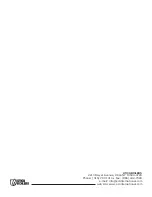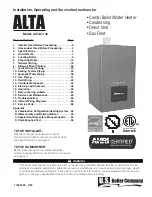
12
Fuel pump connections and by-pass should be made
according to instructions attached to the fuel pump. If
tank is more than 20' from the boiler, a two stage fuel
unit should be installed in place of the single stage pump
supplied as standard equipment with the burner. Make
certain the rotation and speed are the same and the pump
is suitable for the burner horsepower rating.
TYPICAL INSTALLATION
SINGLE PIPE OIL SYSTEM
TYPICAL INSTALLATION
TWO PIPE OIL SYSTEM
An oil line filter and shut-off valve should be installed in
the suction line. Shut-off valves should be installed in both
the suction and return lines at the burner for convenience
in servicing burner. Allow extra tubing at burner so
burner may be removed from boiler for cleaning without
disconnecting tubing. (Figures #13 - #14) An optional
flexible oil line is available.
Thermostat should be installed on an inside wall about
1.
four feet above the floor.
NEVER
2.
install a thermostat on an outside wall.
Do not install a thermostat where it will be affected
3.
by drafts, hot or cold pipes, sunlight, lighting fixtures,
television, fireplaces, or chimneys.
Check thermostat operation by raising and lowering
4.
thermostat as required to start and stop the burner.
Instructions for the final adjustment of the thermostat
5.
are packaged with the thermostat (adjusting heating
anticipator, calibration, etc.).
Figure #13
Figure #14
OIL TANk AND PIPING
ELECTRICAL WIRING
ELECTRICAL WIRING should conform with the latest edition
of National Electrical Code ANSI/NFPA No. 70 and/or local
authority having jurisdiction.
A separate electrical circuit should be run from the entry
box with a fused disconnect switch in this circuit. See
wiring diagram’s in Figures #15, & #16, for suggested
circuitry and field wiring.
Wiring for zone valve installations are furnished with zone
valve packages.
ThERMOSTAT INSTALLATION










































